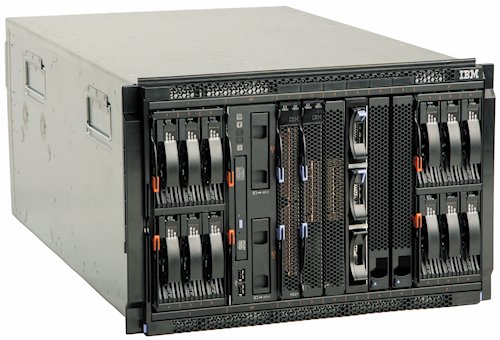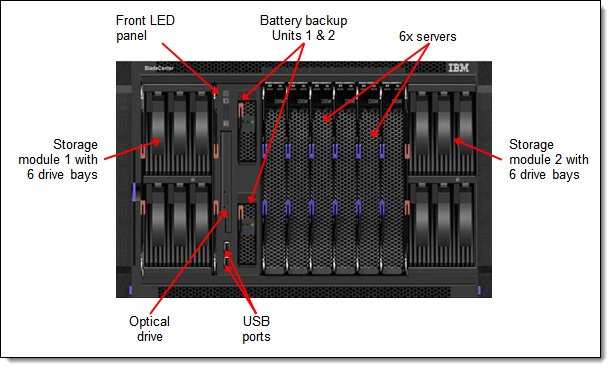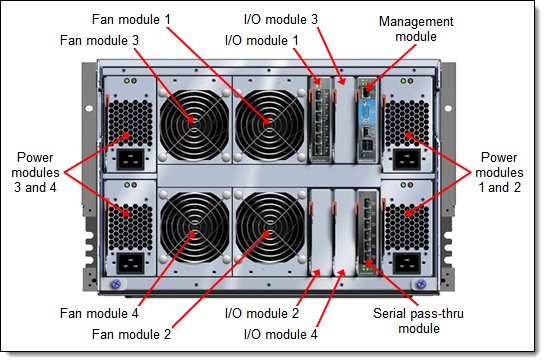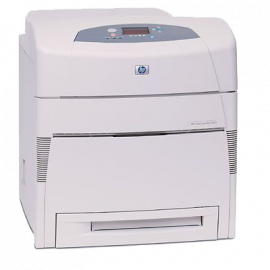IBM BladeCenter S
- Servers
- Storage
- Backup Infrastructure
- Laptops & Desktops
- Rack Infrastructure
- Network Infrastructure
- Printers & Scanners
- Power Infrastructure
- Brand
- Stock Clearance
- New Arrivals
- Cloud Computing
Your shopping cart is empty!
Product Description
Introduction
Lenovo BladeCenter® remains an innovative solution to running business solutions. BladeCenter builds on the Lenovo commitment to integrating server, storage, and networking functionality with technology exchange and heterogeneous management. BladeCenter offers the ease, density, availability, affordability, and scalability that are central to the blade technology promise.
BladeCenter S combines the power of blade servers with integrated storage, all in an easy-to-use package that is designed specifically for the office and distributed enterprise environment. The BladeCenter S chassis can hold up to six blade servers, and up to 12 hot-swap 3.5-inch SAS or SATA disk drives in just 7U of rack space.
The BladeCenter S is shown in Figure 1.

Figure 1. The BladeCenter S
Did you know?
Unlike the BladeCenter E and BladeCenter H chassis, the BladeCenter S is designed to operate on either 110 V or 220 V power. It is also designed to run in an office environment with the BladeCenter S Office Enablement Kit. The combination of these features means that the BladeCenter S is ideal for customers with a distributed IT infrastructure where there is no dedicated computer room.
Key features
This section lists the key features of BladeCenter S chassis.
Performance
The BladeCenter S chassis offers numerous features to boost performance and reduce costs:
- Support for the latest generation of BladeCenter blades, helping to provide performance and investment protection.
- Blade servers communicate directly to switch modules inside the BladeCenter chassis via redundant midplane links to help increase the speed and efficiency of data transfers across blade servers and networks.
- A blade server that is installed in a BladeCenter S has access to as many as four internal switches, which means that up to eight I/O ports can be enabled from each server that is installed in the chassis.
Flexibility and scalability
The BladeCenter S chassis can grow with your application requirements with these features:
- BladeCenter Virtual Fabric delivers a flexible, open, and connected infrastructure to help optimize application performance. BladeCenter supports many fabrics, including Ethernet, Fibre Channel, InfiniBand, iSCSI, and SAS.
- Support for both x86 servers and Power Systems™ servers in a single chassis.
- BladeCenter S can be used in either 220 V or 110 V power environments. Couple this flexibility with the office-friendly Office Enablement Kit and BladeCenter S fits well in a standard back-office environment, as well as in a data center.
- The two Disk Storage Modules support up to 24 TB of share storage that is integrated into the chassis, providing flexibility and convenience in your application design and data placement.
- The Disk Storage Modules are available either with 3.5-inch drive bays or with 2.5-inch drive bays
- A complete integrated offering is provided with space for servers, networking, and shared storage - all in one 7U modular design enclosure.
- Available Serial Pass-thru Module provides a dedicated serial port to every blade server in the chassis for the applications that need it.
- The BladeCenter server form factor has remained the same since 2002, which means that most servers that are designed for BladeCenter are supported in all BladeCenter chassis. This continuity maximizes flexibility and manageability.
Manageability and security
Powerful systems management features simplify local and remote management of the BladeCenter S chassis:
- The high degree of integration in the various BladeCenter chassis reduces the need for server components, replacing numerous fans, keyboard/video/mouse (KVM) and Ethernet cables, power supplies, external switches, and other components.
- Each BladeCenter chassis includes an Advanced Management Module (AMM). The AMM boosts administrator productivity and reduces skill level requirements, which can help reduce costs, improve overall productivity, and make administration easier.
- Unlike traditional servers and some competitive blades with a myriad of separate management tools, the AMM provides a single point of control for the solution and supports many industry-standard, open protocols.
- The AMM provides systems management capabilities, including web-based out-of-band control; virtual media support; Windows “blue screen” error capture; Lightweight Directory Access Protocol (LDAP) and Secure Sockets Layer (SSL) support; and remote redirection of video, text, keyboard, and mouse for the chassis and the components that are installed in the chassis.
- IBM Systems Director remains a powerful and intelligent solution to manage BladeCenter systems with rack mount and tower servers. Systems Director exploits the hardware’s capabilities by surfacing pertinent information about your blade server. The easy-to-use wizards provide step-by-step instructions and offer automated deployment capabilities.
- IBM Fabric Manager simplifies the deployment of infrastructure connections by managing network and storage address assignments.
- Integrated industry-standard Unified Extensible Firmware Interface (UEFI) in supported servers enables improved setup, configuration, and updates, and simplifies error handling.
- Integrated Trusted Platform Module (TPM) 1.2 in supported servers enables advanced cryptographic functionality, such as digital signatures and remote attestation.
Availability and serviceability
The BladeCenter S chassis provides many features to simplify serviceability and increase system uptime:
- BladeCenter reduces the number of parts that are required to run the system. Sharing fans, power supplies, systems management, and ports means fewer parts to buy and maintain, and fewer components that can fail and cause downtime.
- Hot-swap components, such as the server, switches, power supplies, and blowers, ensures maximum uptime.
- Redundant components, such as blowers and power supplies, and available RAID support for the drives in the Disk Storage Modules (DSMs) ensures that systems can remain available even during hardware failures.
- The Predictive Failure Analysis (PFA) detects when system components (processors, memory, and hard disk drives) operate outside of standard thresholds and generates proactive alerts in advance of a possible failure, therefore increasing uptime.
- Dual independent power and signal connectors to the BladeCenter chassis midplane provide fault tolerance to increase uptime.
- Tool-less cover removal provides easy access to upgrades and serviceable parts, such as CPU, memory, and adapters.
- A standard three-year (parts and labor) limited on-site warranty affords customers peace of mind and greater potential investment protection.
Energy efficiency
The BladeCenter S chassis has an energy-efficient design with features that include the following functions:
- The BladeCenter family features the industry’s most energy-efficient design. The various BladeCenter chassis use ultra-high efficiency power supplies. BladeCenter power modules are up to 91% efficient at converting power from ac wall current to the dc power that is used inside servers. This efficiency helps save money because more of the power input for which the customer is paying is used for processing, rather than released into the data center as wasted heat.
- Environmentally tuned blower/fan modules in the chassis adjust to compensate for changing thermal characteristics. At the lower speeds, they draw less power and suffer less wear. Equally important in a crowded data center, temperature-controlled blowers and fans produce less ambient noise in the data center than if they ran constantly at full speed.
- Low-voltage Intel Xeon processors and low-voltage dual inline memory modules (DIMMs) in supported servers draw less energy to satisfy demands of power and thermally constrained data centers and telecommunication environments.
- IBM Systems Director Active Energy Manager™ provides advanced power management features with actual real-time energy monitoring, reporting, and capping features.
Locations of key components
Figure 2 shows the front of the BladeCenter S chassis.

Figure 2. Front of the BladeCenter S chassis
Figure 3 shows the rear of the BladeCenter S chassis.

Figure 3. Rear of the BladeCenter S chassis
Standard specifications
The following table lists the standard specifications.
Table 1. Standard specifications
| Components | Specification |
| Machine type | System x sales channel: 8886 Power Systems sales channel: 7779 |
| Form factor | 7U rack-mounted unit. |
| Maximum number of servers supported | Up to six server blades in six bays. Supports double-wide servers or servers with expansion blades. |
| Systems supported | All BladeCenter servers. |
| Nodes per 42U rack | Up to 42 servers in six chassis. |
| Storage subsystem | Two front-accessible bays for disk storage modules. Each storage module can house up to six 3.5-inch disk drives (12 drives total) or up to 12 2.5-inch disk drives (24 drives total). Storage accessible from installed blade servers via SAS expansion cards in the servers and SAS modules in the chassis. Use of the SAS RAID Controller Module provides integrated RAID and SAS-based storage area networking capabilities. SAS RAID Controller Module includes front-accessible battery backup unit. The 12x 2.5-inch disk storage modules require the SAS RAID Controller Module (SAS Controller Module not supported). |
| Advanced Management Modules | One Advanced Management Module (AMM), non-redundant, hot-swap, rear access, comprehensive system management functions; PowerPC® 440GP controller. Communicates with integrated system management processor on each blade server. Complete KVM switch local functionality. |
| Media tray | Two USB ports and optional Multiburner optical drive connectable to any one blade server; switchable via buttons on media tray or remote via the AMM web interface. |
| Ports | AMM: DB-15 analog video port. Dual USB 2.0 for keyboard and mouse. Serial (RJ45). 10/100 Ethernet remote management. Media tray: Two USB 2.0 ports that are connectable to any server (not shareable). Rear: Optional serial pass-thru module in dedicated bay to supply one serial port for each blade bay. |
| I/O architecture | Up to four I/O modules that support either 1 Gb Ethernet (some modules with 10 Gb uplinks), 4 Gb or 8 Gb Fibre Channel, or 3 Gb SAS connections for each of the blade servers. Bay 1 routes server onboard Ethernet; bay 2 routes CFFh expansion adapter (ports 1 & 2 only, limited adapter support); bays 3 and 4 route CIOv or CFFv expansion adapter in each server. |
| Power modules | Up to four hot-swap power modules. Supports 110 V and 220 V supply. Rear access. Supplies power to chassis components up to 1450 W at 220 V or 950 W at 110 V. Supports redundancy within pair. Power modules 1 and 2 supply power to all blade bays and components. Power modules 3 and 4 needed for high-performance servers or higher redundancy modes or if storage module 2 installed. Models 1Tx, ETx, and EVx have IEC320-C14 sockets; other models have C20 sockets. |
| Fan modules | Four fan modules standard and maximum. Hot-swap and redundant, variable speed, rear access, front to back airflow. |
| System LED panel | Front and rear information panels. Provides power-on, location, over-temperature, information, and system-error conditions. |
| Declared sound level | 6.8 bels. |
| Temperature | Operating air temperature: 10°C - 35°C (50°F to 95°F) up to 900 m (3,000 ft) 10°C - 32°C (50°F to 90°F) up to 2,100 m (7,000 ft) |
| Electrical power | Input power: 100 - 127 V or 200 - 240 V ac (nominal), 50 or 60 Hz. |
| Power consumption | 3,500 watts maximum. |
| Power cords | One rack power cable is supplied with each power module. |
| Dimensions | Height: 306 mm (12 in). Width: 444 mm (17.5 in). Depth: 733 mm (28.9 in). |
| Weight | 40 - 108 kg (90 - 240 lb). |
| Limited warranty | Three-year customer-replaceable unit and on-site limited warranty with 9x5/NBD. |
| Service and support | Optional service upgrades are available through IBM ServicePacs: Four-hour or two-hour response time, eight-hour fix time, one-year or two-year warranty extension. |

-1000x1000.png)
-270x270.png)
-270x270.jpg)
-270x270.jpg)
-270x270.png)
-270x270.png)

